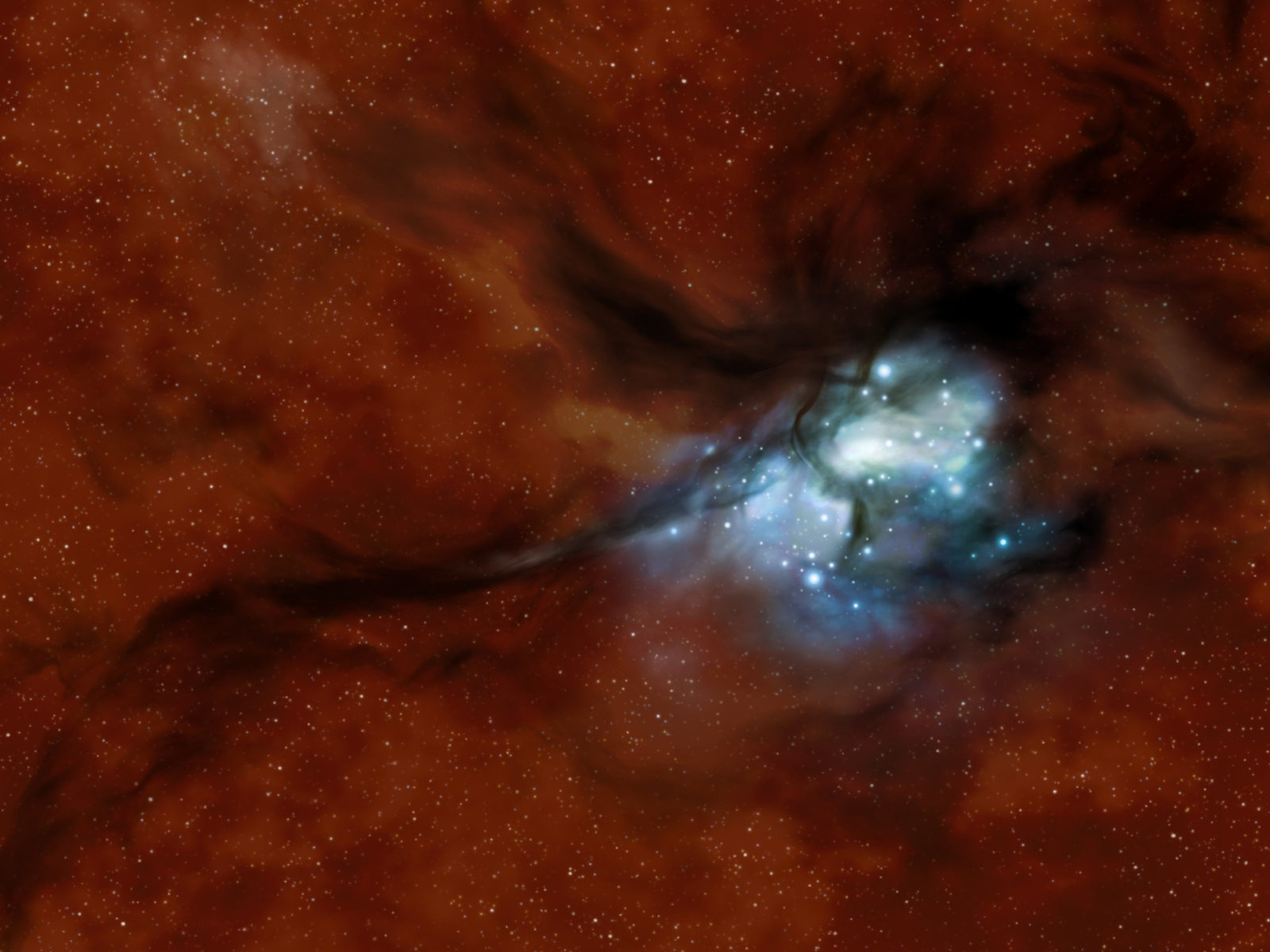Illustration of a star cluster forming from the collision of turbulent molecular clouds, which appear as dark shadows in front of the background galactic star field. Credit: NASA/SOFIA/Lynette Cook
November 7, 2018, NASA
The sun, like all stars, was born in a giant cold cloud of molecular gas and dust. It may have had dozens or even hundreds of stellar siblings – a star cluster – but these early companions are now scattered throughout our Milky Way galaxy. Although the remnants of this particular creation event have long since dispersed, the process of star birth continues today within our galaxy and beyond. Star clusters are conceived in the hearts of optically dark clouds where the early phases of formation have historically been hidden from view. But these cold, dusty clouds shine brightly in the infrared, so telescopes like the Stratospheric Observatory for Infrared Astronomy, SOFIA, can begin to reveal these long-held secrets.
Traditional models claim that the force of gravity may be solely responsible for the formation of stars and star clusters. More recent observations suggest that magnetic fields, turbulence, or both are also involved and may even dominate the creation process. But just what triggers the events that lead to the formation of star clusters?
Astronomers using SOFIA’s instrument, the German Receiver for Astronomy at Terahertz Frequencies, known as GREAT, have found new evidence that star clusters form through collisions between giant molecular clouds…
Read more at: https://phys.org/news/2018-11-cosmic-collisions-sofia-unravels-mysterious.html#jCp

